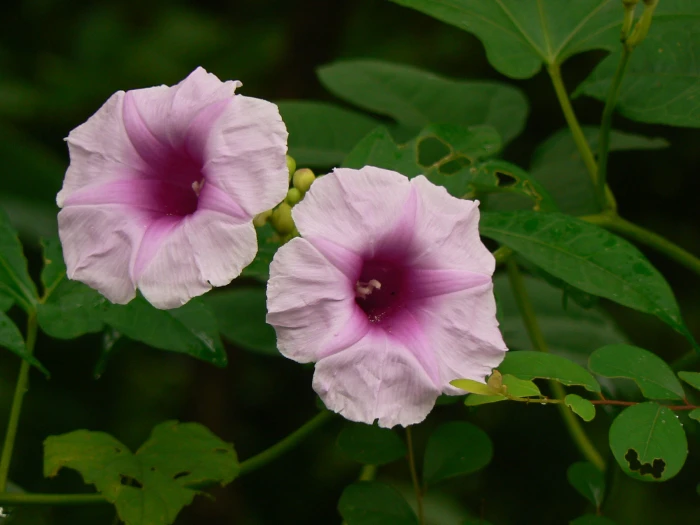Giant Potato
(Ipomoea mauritiana)
Giant Potato (Ipomoea mauritiana)
/
/

Dinesh Valke
CC BY-SA 2.0
Image By:
Dinesh Valke
Recorded By:
Copyright:
CC BY-SA 2.0
Copyright Notice:
Photo by: Dinesh Valke | License Type: CC BY-SA 2.0 | License URL: https://creativecommons.org/licenses/by/2.0/ | Uploader: Dinesh Valke | Publisher: Flickr |






















Estimated Native Range
Climate Requirements for Las Cruces, New Mexico
| This Plant | Your Site | Plant Suitability for Your Location | ||
|---|---|---|---|---|
| • Precipitation | 2" - 209" | 10" | Your precipitation may be insufficient for this plant. Irrigate N" / year. | Irrigate N" / year |
| • High Temp. | 48°F - 107°F | 96°F | Your summer temperatures are normal for this plant. | Excellent |
| • Low Temp. | -11°F - 75°F | 28°F | Your winter temperatures are normal for this plant | Excellent |
This plant should grow well at your location with about N inches per year (Y minutes per month) of irrigation.
Summary
Ipomoea mauritiana, commonly known as Giant Potato, is a deciduous perennial vine native to tropical and subtropical woodlands, thickets, and riverbanks of tropical Africa and South America. It can climb to heights of 10-15 feet (3-4.6 meters) with a spread of 2-4 feet (0.6-1.2 meters). The vine is characterized by its heart-shaped leaves and large, tuberous roots. It produces showy, trumpet-shaped flowers that are typically pink or red, blooming in the summer and attracting various pollinators.
Giant Potato is valued for its ornamental flowers and rapid growth, making it suitable for covering trellises, arbors, and fences. It is also used in traditional medicine, and its tubers are edible after careful preparation. In cultivation, it thrives in full sun to partial shade and prefers moist, well-drained soils. While it requires medium amounts of water, it can tolerate short periods of drought. Gardeners should be aware that it can become invasive in suitable climates and may require regular pruning to control its spread. Additionally, it is susceptible to pests such as spider mites and whiteflies.CC BY-SA 4.0
Giant Potato is valued for its ornamental flowers and rapid growth, making it suitable for covering trellises, arbors, and fences. It is also used in traditional medicine, and its tubers are edible after careful preparation. In cultivation, it thrives in full sun to partial shade and prefers moist, well-drained soils. While it requires medium amounts of water, it can tolerate short periods of drought. Gardeners should be aware that it can become invasive in suitable climates and may require regular pruning to control its spread. Additionally, it is susceptible to pests such as spider mites and whiteflies.CC BY-SA 4.0
Plant Description
- Plant Type: Vine
- Height: 10-15 feet
- Width: 2-4 feet
- Growth Rate: Rapid
- Flower Color: Pink, Red
- Flowering Season: Summer
- Leaf Retention: Deciduous
Growth Requirements
- Sun: Full Sun
- Water: Medium
- Drainage: Medium
Common Uses
Bee Garden, Bird Garden, Butterfly Garden, Deer Resistant, Hummingbird Garden, Low Maintenance, Showy Flowers
Natural Habitat
native to tropical and subtropical woodlands, thickets, and riverbanks of tropical Africa and South America
Other Names
Common Names: Mauritanian Convolvulus, Giant Potato, Haiti-Prunkwinde, 掌葉牽牛, Qi Zhao Long, Yatsude-Asagao, Batata Zambomba, Batata Zamdumbia
Scientific Names: Ipomoea tuberosa, Ipomoea mauritiana, Ipomoea digitata, Ipomoea bignonioides, Ipomoea paniculata, Ipomoea digitata var. quinquefida, Convolvulus paniculatus, Batatas paniculata, Ipomoea insignis
GBIF Accepted Name: Ipomoea mauritiana Jacq.